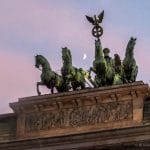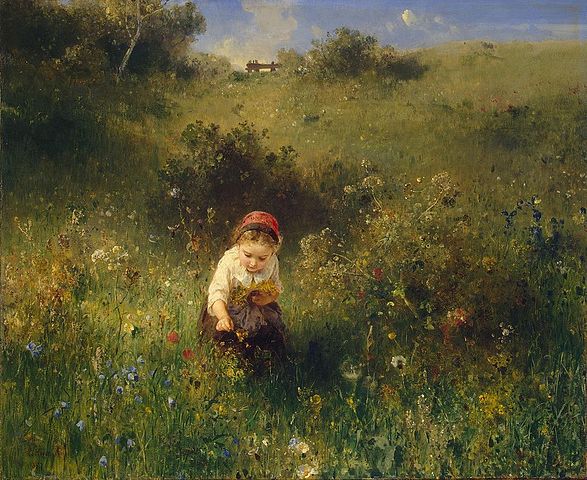
Ludwig Knaus, born on October 10, 1829, in Wiesbaden, Germany, was a painter whose work would come to define an era of genre painting in the 19th century. The son of a goldsmith, Knaus displayed an early aptitude for drawing, which his family encouraged. Recognizing his budding talent, they enrolled him in the Düsseldorf Academy of Fine Arts in 1846. There, Knaus studied under Karl Ferdinand Sohn and Friedrich Wilhelm Schadow, key figures of the Düsseldorf School, known for their detailed and realistic portrayals of historical and genre scenes.
At the Academy, Knaus’s education was rigorous and comprehensive, emphasizing the fundamentals of drawing, anatomy, and composition. His early works already showed a remarkable ability to capture the subtleties of human emotion and social interaction. His breakthrough came with “The Golden Wedding” in 1850, a painting that depicted a lively peasant wedding celebration. This work was notable for its vibrant characterizations and meticulous attention to detail, qualities that would become hallmarks of Knaus’s style.
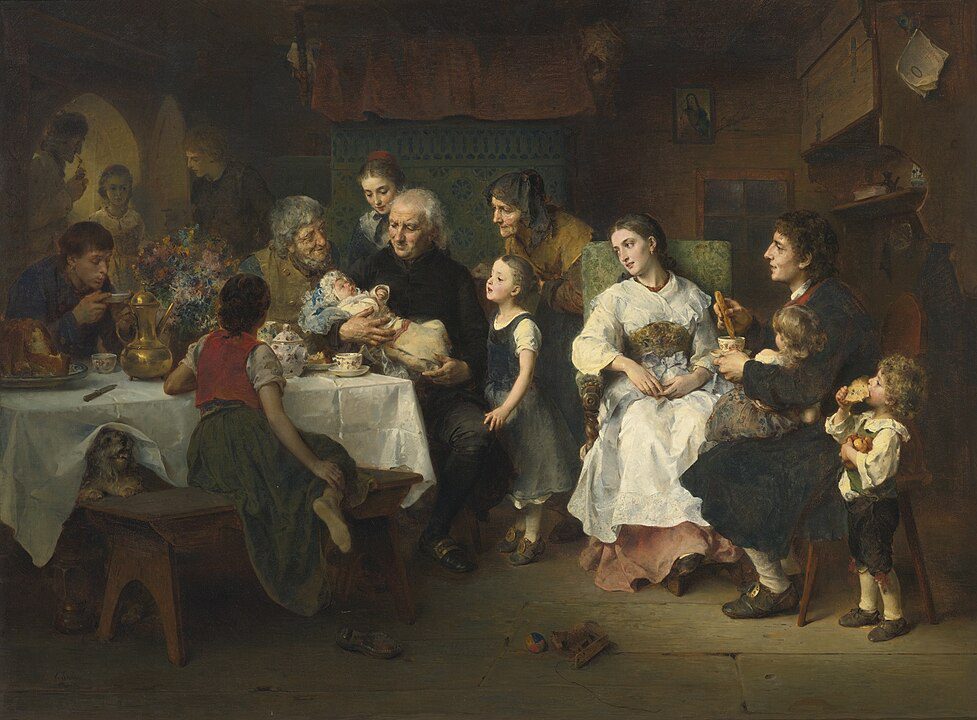
In 1852, Knaus made a pivotal move to Paris, a city that was then the epicenter of the art world. Paris exposed him to the works of the French Realists, including Gustave Courbet and Jean-François Millet, whose focus on everyday life and the working class resonated with his own artistic inclinations. During this period, Knaus honed his skills further, developing a unique approach that blended the detailed realism of the Düsseldorf School with the emotional depth and social consciousness of French Realism.
Prime time in paris
Knaus’s time in Paris proved to be highly productive. His works began to gain international attention, and he participated in the Salon, the prestigious annual exhibition of the Académie des Beaux-Arts. One of his notable works from this period, “The Village Photographer” (1856), showcases his ability to infuse everyday scenes with a sense of narrative and character. The painting depicts a rustic photographer at work, surrounded by curious villagers, each figure rendered with a keen sense of individuality and humanity.
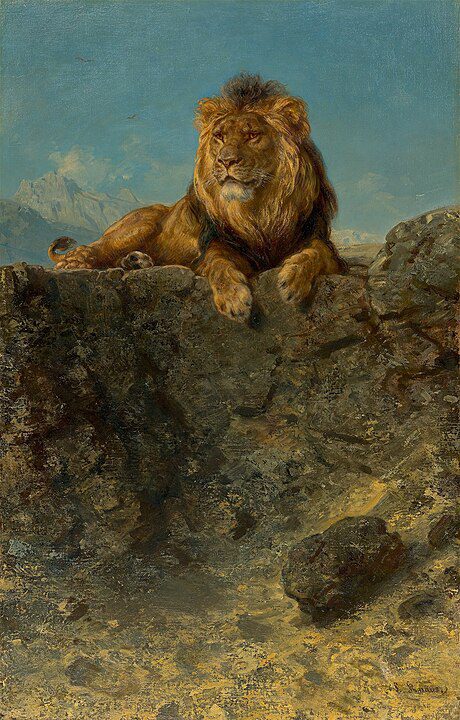
By the late 1850s, Knaus had established himself as one of the leading genre painters in Europe. His reputation was further cemented with “Children’s Festival” (1859), a charming depiction of children at play, which won a gold medal at the Paris Salon. This work exemplified his skill in capturing the innocence and joy of childhood, as well as his masterful use of light and color to create a vibrant, lifelike scene.
To berlin
Returning to Germany in the early 1860s, Knaus continued to enjoy immense success. He settled in Berlin, where he became a member of the Berlin Academy of Arts. His works from this period, such as “The Children’s Festival” (1862) and “The Holy Family” (1868), continued to explore themes of everyday life and human interaction. Knaus was particularly adept at portraying children, peasants, and rural scenes, imbuing his subjects with a sense of dignity and individuality.
Knaus’s technique was characterized by meticulous detail and a warm, naturalistic palette. He often employed a soft, diffused light to create a sense of intimacy and immediacy in his scenes. His compositions were carefully constructed, with a keen eye for the dynamics of human interaction and the subtle nuances of gesture and expression. This ability to capture the essence of his subjects made his work immensely popular, both in Germany and internationally.
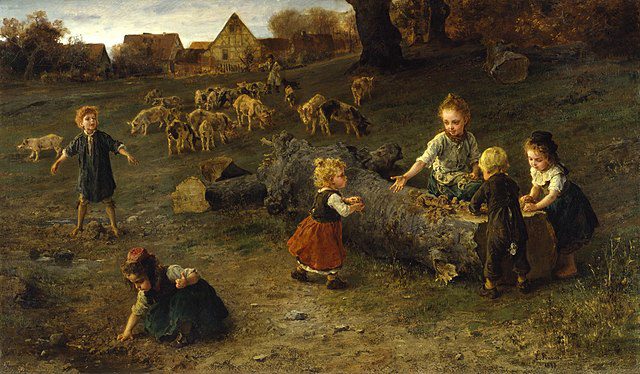
In addition to his genre scenes, Knaus was also an accomplished portraitist. His portraits, such as those of the German Emperor Wilhelm I and the composer Franz Liszt, are notable for their psychological depth and technical precision. Knaus’s ability to convey the personality and character of his sitters made him a sought-after portrait painter among the European elite.
many honors
Throughout his career, Knaus received numerous accolades and honors. He was appointed a professor at the Berlin Academy of Arts in 1874, a position he held for many years. His influence on the next generation of German painters was significant, and his teaching helped to shape the development of genre painting in Germany. Knaus was also a member of several prestigious art academies, including those in Munich, Vienna, and Amsterdam.
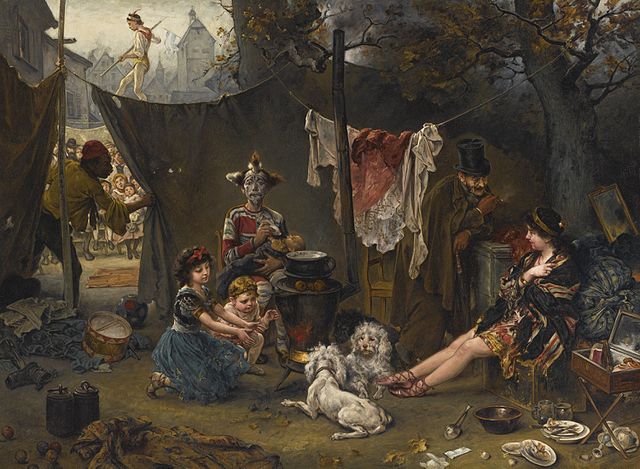
Despite his success, Knaus remained dedicated to his art and continued to paint well into his later years. His works from the late 19th and early 20th centuries, such as “The Dance Lesson” (1891) and “The Convalescent” (1903), reflect a continued refinement of his style and a deepening of his emotional insight. These later works often feature more subdued tones and a greater emphasis on mood and atmosphere, demonstrating Knaus’s ability to adapt and evolve as an artist.
Ludwig Knaus passed away on December 7, 1910, in Berlin, leaving behind a rich legacy of paintings that continue to be celebrated for their technical excellence and heartfelt portrayal of human life. His works can be found in major museums and collections around the world, including the Alte Nationalgalerie in Berlin, the Hermitage Museum in St. Petersburg, and the Metropolitan Museum of Art in New York.
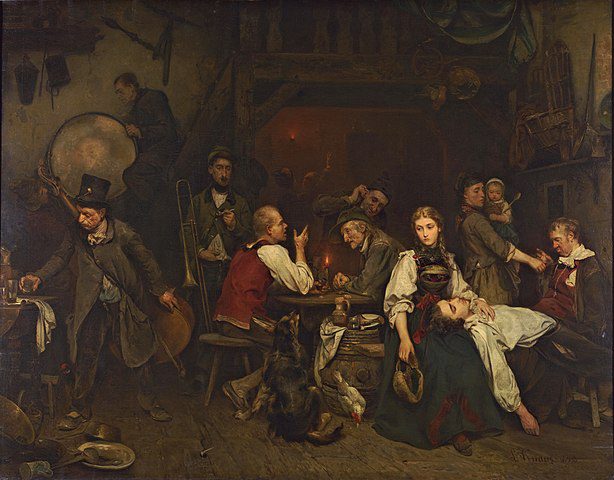
In conclusion, Ludwig Knaus was a masterful painter who brought the everyday scenes of 19th-century life to vibrant, compelling life on canvas. His work, characterized by its meticulous detail, emotional depth, and keen observation of human nature, remains a testament to his extraordinary talent and enduring legacy in the world of art.




